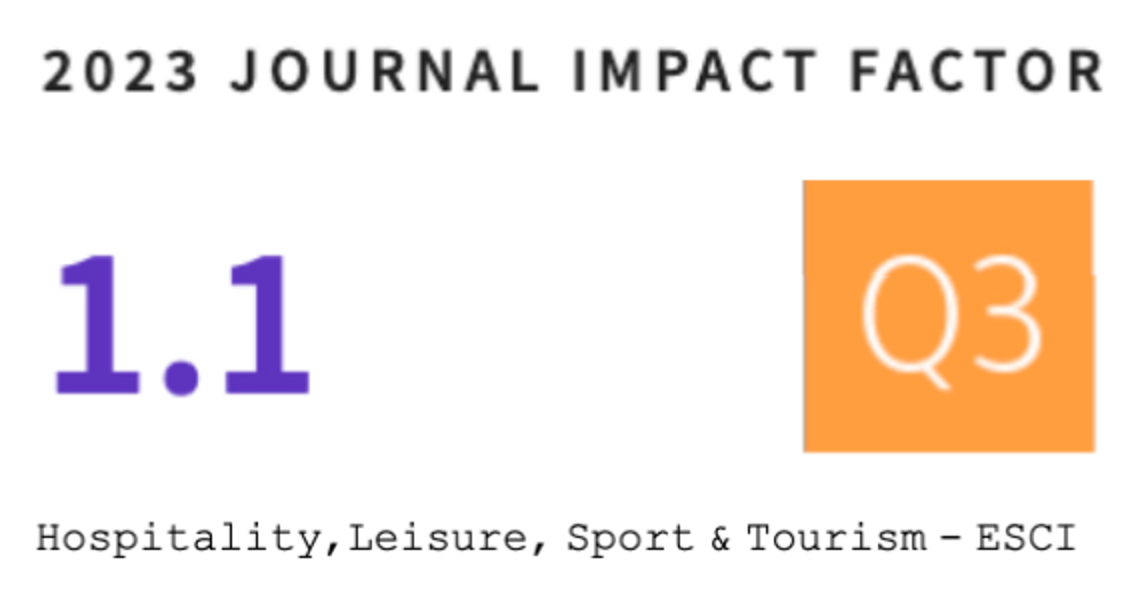Cuantificación de carga externa e interna en fútbol masculino semiprofesional (External and Internal Load Quantification in a semi-professional male football team)
DOI:
https://doi.org/10.12800/ccd.v16i48.1750Keywords:
Monitorización, microciclo, acelerometría, SHRZ, VFC, perfil de entrenamiento (Monitoring, microcycle, accelerometry, HRV, training characterization)Abstract
Con el objetivo de analizar el comportamiento de la carga externa (CE) e interna (CI) en un equipo de fútbol de la Primera División Española Sub-19, se realizó un estudio prospectivo observacional durante un microciclo del periodo competitivo durante la temporada 2018/2019. Durante 5 sesiones de entrenamiento y 1 partido se registró la percepción subjetiva de esfuerzo de sesión (sRPE) y, mediante acelerometría (Polar Team Pro), se analizaron las variables de CE distancia recorrida, número de sprint, velocidad de carrera, desaceleraciones y aceleraciones, y las variables de CI sumatorio de zonas de frecuencia cardíaca (SHRZ; summated heart rate zone) y variabilidad de la frecuencia cardíaca (VFC). Se determinó la independencia de las variables y exploraron posibles relaciones entre las variables y su posible coocurrencia. CE y CI se comportaron de manera independiente (F=282.05; p<.001; ES=.25). Se observaron relaciones significativas entre variables de CE y CI: SHRZ se relacionó con la totalidad las variables de CE (Distancia/min, r=.845, p=.034; Sprint, r=.928, p=.008; V4/min, r=.916, p=.01; HSR/min, r=.909, p=.012; Total DF/min, r=.872, p=.023; Total AF/min, r=.921, p=.009). RRMean, con Sprint, r=-.856, p=.03; Total DF/min, r=-.943, p=.017; Total AF/min, r=-.943, p=.017). Se determinó una posible coocurrencia entre CE y CI (R2 = 1.000; p = .005) y entre CI y sRPE (R2 = 1.000; p = .008). Las variables de CE presentan una posible coocurrencia con la variable de CI SHRZ. La variable subjetiva de CI sRPE presenta una posible coocurrencia con las variables objetivas de CI relativas a la VFC (RR mean, SDNN, RMSSD) y el tiempo de exposición de sesión. Las sesiones de entrenamiento, en un contexto semiprofesional de un equipo de fútbol, no replican las demandas de competición, presentando esta la mayor exigencia del microciclo.
===
In order to quantify the external and internal load in a Spanish First Division U-19 football team, a prospective observational study was carried out for a microcycle during the 2018/2019 season. For a 5 training sessions and 1 match, session rate of perceived exertion (sRPE) was recorded and, with accelerometry (Polar Team Pro), were analysed studying distance, sprint, running speed, decelerations and accelerations by external load, and summated heart rate zone (SHRZ) and heart rate variability (HRV) by internal load. The independence of the variables was determined and possible relationships between variables and their causality were explored. External and internal load behave independently (F=282.05; p<.001; ES=.25). Significant relationships between external and internal measures were observed: SHRZ was related con to all external variables (Distance/min, R=.845, p=.034; Sprint; r=.928, p=.008; V4/min, r=.916, p=.01; HSR/min, r=.909, p=.012; Total DF/min, r=.872, p=.023; Total AF/min, r=.921, p=.009). RRMean, con Sprint, r=-.856, p=.03; Total DF/min, r=-.943, p=.017; Total AF/min, r=-.943, p=.017). Possible causality was determined between external and internal load (R2=1.000; p=.005) and between internal load and sRPE (R2=1.000; p=.008). CE variables present a possible co-occurrence with CI variable SHRZ. The subjective IQ variable sRPE presents a possible co-occurrence with the IQ objective variables relative to HRV (RR mean, SDNN, RMSSD) and session exposure time. The training sessions, in a semi-professional context of a soccer team, do not replicate the demands of competition, this being the highest requirement of the microcycle.
References
Bourdon, P. C., Cardinale, M., Murray, A., Gastin, P., Kellmann, M., Varley, M. C., Gabbet, T. J., Coutts, A. J., Burgess, D. J, Gregson, W, Cable, N. T. (2017). Monitoring Athlete Training Loads: Consensus Statement. International Journal of Sports Physiology and Performance, 161-170. doi:10.1123/IJSPP.2017-0208
Bowen, L., Gross, A. S., Gimpel, M., Bruce-low, S., & Li, F. (2019). Spikes in acute:chronic workload ratio (ACWR) associated with a 5 – 7 times greater injury rate in English Premier League football players: a comprehensive 3-year study. British journal of sports medicine, 1-9. doi:10.1136/bjsports-2018-099422
Bradley, P. S., & Ade, J. D. (2018). Are current physical match performance metrics in elite soccer fit for purpose or is the adoption of an integrated approach needed? International Journal of Sports Physiology and Performance. doi:10.1123/ijspp.2017-0433
Brito, J., Hertzog, M., & P. Nassis, G. (2016). Do match-related contextual variables influence training load in highly trained soccer players? Journal of Strength and Conditioning Research, 30(2). doi:10.1519/JSC.0000000000001113
Campos-Vázquez, M. Á., González-Jurado, J. A., León-Prados, J. A., Toscano-Bendala, F. J., & Suarez-Arrones, L. (2016). Comparación de la carga interna entre partidos amistosos y un juego condicionado en jugadores profesionales de fútbol. Cultura, Ciencia y Deporte, 11, 67-73. doi:10.12800/ccd.v11i31.644
Capdevila, L., Rodas, G., Ocaña, M., Parrado, E., Pintanel, M., & Valero, M. (2008). Variabilidad de la frecuencia cardíaca como indicador de salud en el deporte: validación con un cuestionario de calidad. Apunts Medicina de l’Esport, 62-69. doi:10.1016/S1886-6581(08)70073-2
Casamichana, D., Castellano, J., & Dellal, A. (2013). Perfil cinemático en partidos amistosos de futbolistas semiprofesionales. Journal of Sport and Health Research, 5(3), 283-294.
Casamichana, D., & Castellano, J. (2011). Demandas físicas en jugadores semiprofesionales de fútbol: ¿se entrena igual que se compite? Cultura, Ciencia y Deporte, 6, 121-127. doi:10.12800/ccd.v6i17.39
Clemente, F. M., Owen, A., & Serra-olivares, J. (2019). Characterization of the weekly external load profile of professional soccer teams from portugal and the netherlands, 66(March), 155-164. Doi:10.2478/hukin-2018-0054
Delecroix, B., Delaval, B., Dawson, B., Berthoin, S., & Dupont, G. (2019). Workload and injury incidence in elite football academy players. Journal of Sports Sciences. doi:10.1080/02640414.2019.1584954
Domínguez, E. (2013). Alternativas en la estructura y diseño del microciclo en el fútbol. Revista de Preparación Física en el Fútbol, (1), 1-14.
Fanchini, M., Rampinini, E., Riggio, M., Coutts, A. J., Pecci, C., & Mccall, A. (2018). Despite association, the acute:chronic work load ratio does not predict non-contact injury in elite footballers. Science and Medicine in Football, 1-7. doi:10.1080/24733938.2018.1429014
Gabbett, T. J. (2016). The training-injury prevention paradox: should athletes be training smarter and harder ? British journal of sports medicine, (January), 1-9. doi:10.1136/bjsports-2015-095788
Halperin, I., & Emanuel, A. (2019). Rating of perceived effort: methodological concerns and future directions. Sports Medicine. doi:10.1007/s40279-019-01229-z
Impellizzeri, F. M., Marcora, S. M., & Coutts, A. J. (2019). Internal and External Training Load: 15 Years On. Journal of sports physiology and performance, (January). doi:10.1123/ijspp.2018-0935
Impellizzeri, F. M., Rampinini, E., Coutts, A. J., & Marcora, S. M. (2004). Use of RPE-based training load in soccer. Medicine & Science in Sports & Exercise. doi:10.1249/01.MSS.0000128199.23901.2F
Ivarsson A, Johnson U & Podlog L. (2013) Psychological predictors of injury occurrence: a prospective investigation of professional Swedish soccer players. Journal of Sport Rehabilitation. 2013;22:19–26. doi:10.1123/jsr.22.1.19
Martín-García, A., Gómez, A., Bradley, P., Morera, F., & Casamichana, D. (2018). Quantification of a professional football team’s external load using a microcycle structure. The Journal of Strength and Conditioning Research, 1-8. doi:10.1519/JSC.0000000000002816
Mccall, A., Dupont, G., & Ekstrand, J. (2018). Internal workload and non-contact injury: a one- season study of five teams from the UEFA Elite Club Injury Study. British journal of sports medicine, 1-6. doi:10.1136/bjsports-2017-098473
Mclaren, S. J., Hurst, C., Spears, I. R., & Weston, M. (2017). The relationships between internal and external measures of training load and intensity in team sports: a meta-analysis. Sports Medicine. doi:10.1007/s40279-017-0830-z
Newton, M., Owen, A. L., & Baker, J. S. (2019). Monitoring external and internal training loads: relationships with injury risk in professional soccer: A review. EC Orthopaedics, (August), 686-697.
Noya, J., & Sillero, M. (2012). Incidencia lesional en el fútbol profesional español a lo largo de una temporada: días de baja por lesión. Apunts Medicina de l’Esport, 1-9. doi:10.1016/j.apunts.2011.10.001
Pol, R., Hristovski, R., Medina, D., & Balague, N. (2018). From microscopic to macroscopic sports injuries. Applying the complex dynamic systems approach to sports medicine: a narrative review. British journal of sports medicine, 1-8. doi:10.1136/bjsports-2016-097395
Pyne D.B. & Martin D.T. (2011). Fatigue-insights from individual and team sports. In: Marino FE, ed. Regulation of fatigue in exercise. New York: Nova Science, 2011:177–85.
Rey-Martínez, J. (2016). Métodos para la cuantificación de la carga en el fútbol. Revista de Preparación Física en el Fútbol, 11-23.
Sansonea,P. A. Tessitorea, A., Paulauskasb, H., Lukonaitieneb, L., Tschanc, H. Plaugad,V & Conte D. (2019). Physical and physiological demands and hormonal responses in basketball small-sided games with different tactical tasks and training regimes. Journal of Science and Medicine in Sport,22. 602–606. doi:10.1016/j.jsams.2018.11.017
Scanlan, A., Wen, N., Tucker, P., & Dalbo, V. (2014). The relationship between internal and external training load models during basketball training. Journal of Strength and Conditioning Research, 28(9), 2397-2405. doi:10.1519/JSC.0000000000000458
Scantlebury, S., Till, K., Atkinson, G., Sawczuk, T., & Jones, B. (2017). The within-participant correlation between s-RPE and heart rate in youth Sport. Sports Medicine International Open, 1. doi:10.1055/s-0043-118650
Schmitt, L., Regnard, J., & Millet, G. P. (2015). Monitoring fatigue status with HRV measures in elite athletes: an avenue beyond RMSSD? Frontiers in Physiology,6, 343. doi:10.3389/fphys.2015.00343
Shaffer F, Ginsberg JP. An Overview of Heart Rate variability Metrics and Norms. Front Public Health. 2017;28:258. doi:10.3389/fpubh.2017.00258
Scott, T. J., Black, C. R., Quinn, J., & Coutts, A. J. (2013). Validity and reliability of the session-RPE method for quantifying training in australian football: a comparison of the CR10 and CR100 scales. Journal of Strength and Conditioning Research, 270-276. doi:10.1519/JSC.0b013e3182541d2e
Stevens, T. G. A., Ruiter, C. J. De, Twisk, J. W. R., Savelsbergh, G. J. P., & Beek, P. J. (2017). Quantification of in-season training load relative to match load in professional Dutch Eredivisie football players. Science and Medicine in Football, 1(2), 117-125. doi:10.1080/24733938.2017.1282163
Downloads
Published
How to Cite
Issue
Section
License
The authors who publish in this journal agree with the following terms:
- The authors retain the copyright and guarantee the journal the right to be the first publication of the work as well as licensed under a Creative Commons Attribution License that allows others to share the work with recognition of the authorship of the work and the initial publication in this journal.
















